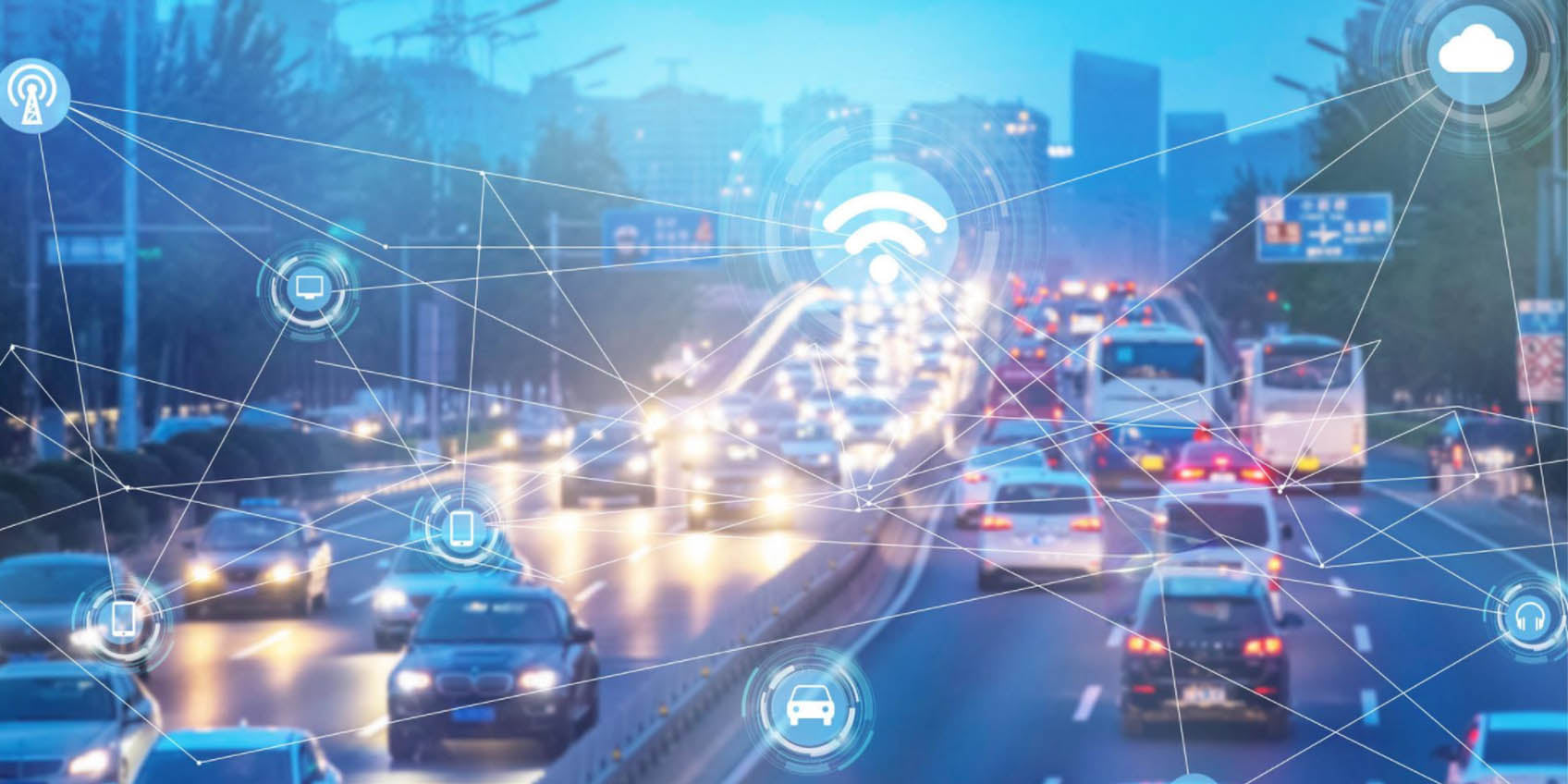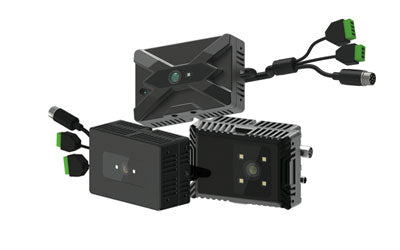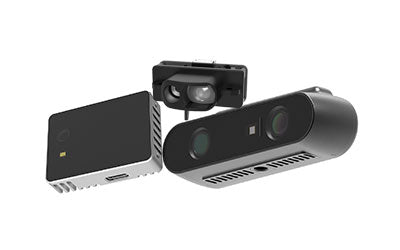TOF Technology Enhances Intelligent Transportation, Boosting Efficiency

With the rapid urbanization process, issues such as traffic congestion and frequent accidents have become increasingly severe. Intelligent Transportation Systems (ITS), as a traffic management solution integrating various advanced technologies, are becoming one of the key technologies to solve these problems. In the field of intelligent transportation, TOF technology (Time-of-Flight), with its high-precision depth perception capabilities, provides strong support for traffic monitoring, road management, and autonomous driving. This article will explore the role and applications of TOF technology in intelligent transportation and how it enhances traffic management efficiency and ensures road safety.
What is the Intelligent Transportation Theory?
Intelligent Transportation System Theory (ITS) is a traffic management and control system theory that uses modern information technology, communication technology, sensing technology, artificial intelligence, and other advanced technologies to improve the efficiency of the transportation system, reduce traffic accidents, enhance safety, and achieve energy conservation and environmental protection. Its primary goal is to optimize traffic flow, reduce congestion, improve the driving experience, and enhance road safety through intelligent means.
The core content of intelligent transportation theory includes the following aspects:
-
Traffic Monitoring and Data Collection: Using sensors, cameras, GPS, and other devices to collect real-time data on traffic flow, vehicle speed, and road conditions.
-
Traffic Information Processing and Analysis: Using big data, artificial intelligence, and other technologies to process and analyze the collected data to identify traffic patterns, predict traffic flow, and even optimize traffic lights and road usage in real-time.
-
Traffic Management and Control: Through intelligent traffic signal control, dynamic road condition information release, and intelligent navigation, optimize traffic flow, reduce traffic accidents, and improve road usage efficiency.
-
Safety and Environmental Protection: Through intelligent monitoring, accident warning systems, and optimized traffic management, reduce traffic accidents. At the same time, improve traffic efficiency and reduce vehicle emissions to achieve energy conservation and environmental protection.
The implementation of intelligent transportation theory can automate, smarten, and network traffic systems, ultimately improving the overall efficiency, safety, and sustainability of the transportation system.
Core Advantages of TOF Technology in Intelligent Transportation
The core advantage of TOF technology lies in its ability to real-time acquire precise 3D depth data. Compared to traditional 2D cameras or radar systems, TOF sensors can provide distance information between objects and sensors, and they are not affected by environmental light changes. For intelligent transportation systems, TOF technology can provide stable and reliable perception data in various complex environments, laying the foundation for the efficient operation of traffic management systems.
Main Applications of TOF Technology in Intelligent Transportation
1. Intelligent Traffic Monitoring and Management
Traditional traffic monitoring cameras typically rely on 2D images to capture traffic flow, vehicle speed, and other information. However, this method may not accurately capture traffic conditions, especially in low-visibility or complex road environments. TOF sensors can provide high-precision 3D depth information, generating a 3D map of road conditions in real-time by measuring the distance between the road and objects. This helps traffic management systems effectively monitor traffic flow, predict congestion, and detect accidents.
In busy areas such as highways and city intersections, TOF sensors can monitor vehicle speed and vehicle distance, quickly detecting accidents and dangerous situations, promptly responding, and issuing alerts to prevent the spread of traffic accidents. By using data analysis and intelligent algorithms, traffic management departments can optimize signal light control and road resource allocation, improving traffic flow and reducing congestion.
2. Autonomous Driving and Driverless Technology
Autonomous driving is an important part of the future intelligent transportation system, and TOF technology plays a crucial role in this field. Autonomous driving systems rely on multiple sensors (such as LiDAR, cameras, ultrasonic sensors, etc.) to perceive the surrounding environment and perform tasks such as path planning, obstacle avoidance, and decision-making.
TOF technology, with its depth perception capabilities, can provide precise 3D environmental awareness for autonomous vehicles by obtaining real-time distance data of surrounding objects. Whether on high-speed roads or in complex urban environments, TOF sensors can effectively identify pedestrians, obstacles, and other vehicles, helping autonomous vehicles adjust their paths in a timely manner to avoid collisions. Additionally, TOF sensors work stably in different lighting conditions, ensuring that the autonomous driving system can accurately perceive its surroundings in both day and night.
3. Smart Parking Systems
As urban populations grow, the shortage of parking spaces has become an important challenge in intelligent transportation. TOF technology enables precise parking space detection and management in smart parking systems. By deploying TOF sensors in parking lots, the system can monitor the status of each parking space in real-time, determine whether a space is occupied, and provide real-time parking information to drivers. This improves parking efficiency and reduces unnecessary vehicle roaming, alleviating traffic pressure in parking lots.
TOF technology can also help automatic parking systems precisely detect parking space and obstacles, providing accurate navigation for automatic parking, reducing the pressure on drivers when parking, and improving the convenience and safety of parking.
4. Pedestrian and Non-Motorized Vehicle Detection
TOF technology can effectively be applied in pedestrian detection and non-motorized vehicle (such as bicycles, electric scooters) monitoring to enhance road safety. In traffic signal control systems, TOF sensors can accurately detect the position, movement trajectory, and distance of pedestrians and non-motorized vehicles from vehicles. When a pedestrian approaches a traffic signal, TOF sensors can promptly sense this and adjust the signal lights via the traffic management system to ensure pedestrian and non-motorized vehicle safety.
Additionally, in areas like city streets, campuses, or parks, TOF technology can help intelligent traffic systems monitor pedestrians’ actions in real-time, detecting and avoiding potential collision hazards.
5. Traffic Infrastructure Maintenance and Monitoring
TOF technology can also be used for monitoring traffic infrastructure in intelligent transportation systems. As roads and bridges age, regular inspections of the safety and stability of these facilities become particularly important. TOF sensors can help relevant departments precisely measure the 3D structural changes in roads, bridges, and tunnels, identify potential hazards such as cracks and settlements, and perform timely repairs to ensure traffic safety.
Advantages of TOF Technology in Intelligent Transportation
1. High Precision and Real-time Capability
TOF technology can provide millimeter-level measurement accuracy, which is crucial for accurately locating vehicles, pedestrians, and obstacles. In intelligent transportation systems, accurately acquiring spatial information of objects helps management systems make more precise decisions. Additionally, TOF sensors have fast response capabilities, allowing them to transmit data in real-time, helping traffic management systems make dynamic adjustments.
2. Unaffected by Lighting and Weather Conditions
Traditional cameras or infrared sensors can be affected by environmental light changes, fog, rain, and snow, reducing perception accuracy. In contrast, TOF sensors, using infrared light pulses, can work stably under various lighting conditions, ensuring data accuracy. Whether during the day, night, or in harsh weather conditions, TOF sensors can provide reliable depth information.
3. Adaptability to Complex Environments
TOF technology can adapt to complex traffic environments, providing accurate depth data in city roads, highways, and complex intersections, making it an indispensable part of intelligent transportation systems.
Future of TOF Technology and Intelligent Transportation
As intelligent transportation technologies continue to develop, TOF technology will play an increasingly important role in autonomous driving, smart roads, and vehicle-to-everything (V2X) communication. In the future, TOF technology will further integrate with artificial intelligence, big data analysis, and other technologies to enhance the intelligence of transportation systems.
For example, with the support of 5G and V2X, TOF technology will provide vehicles with more accurate environmental perception data, helping vehicles make autonomous decisions and intelligent scheduling in more complex traffic environments. As autonomous driving technology becomes more widespread, TOF technology will be a key enabler of enhanced traffic safety, reduced accidents, and optimized traffic management.
Conclusion
TOF technology, as a core technology in intelligent transportation systems, is providing strong support for improving traffic safety, optimizing traffic management, and promoting autonomous driving. With its high precision, insensitivity to lighting disturbances, and real-time responsiveness, TOF technology will play an increasingly important role in future intelligent transportation systems, driving the transportation industry toward a more intelligent, safe, and efficient direction.
Synexens Industrial Outdoor 4m TOF Sensor Depth 3D Camera Rangefinder_CS40p
After-sales Support:
Our professional technical team specializing in 3D camera ranging is ready to assist you at any time. Whether you encounter any issues with your TOF camera after purchase or need clarification on TOF technology, feel free to contact us anytime. We are committed to providing high-quality technical after-sales service and user experience, ensuring your peace of mind in both shopping and using our products.
-
で掲示されます
CS40P






